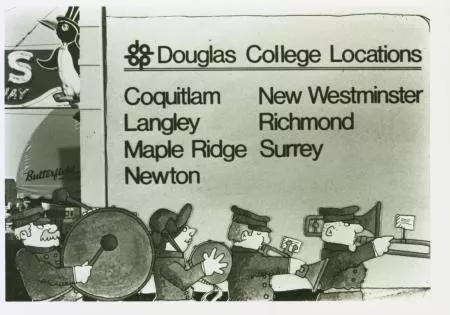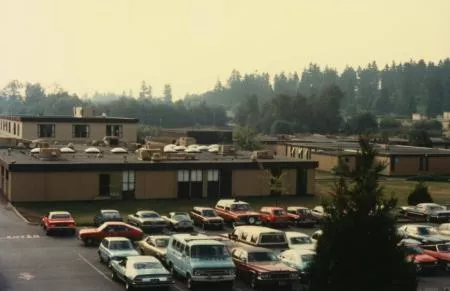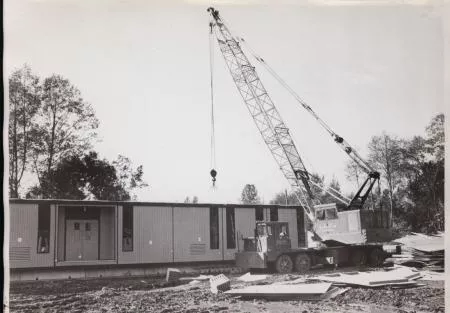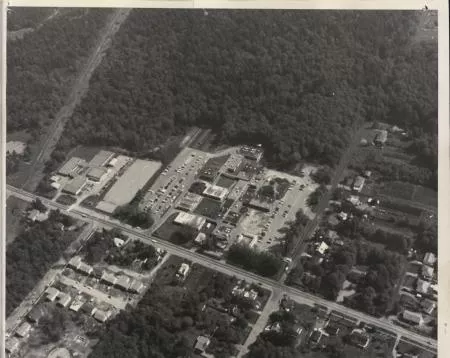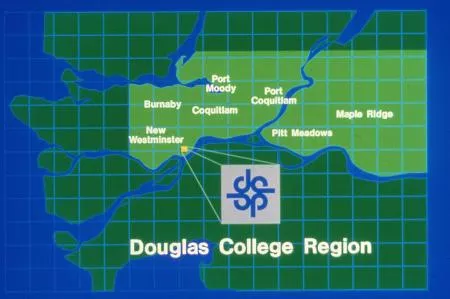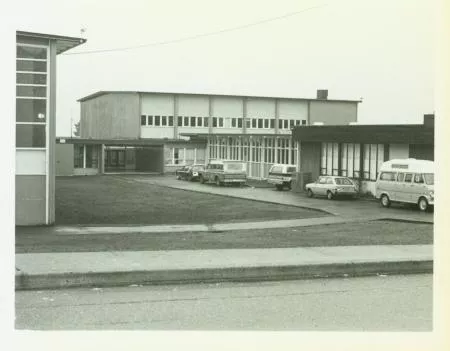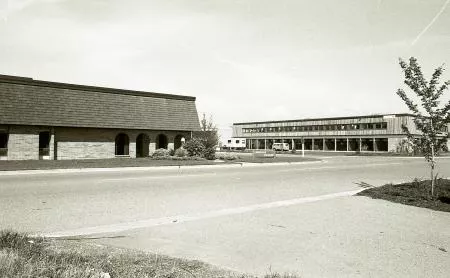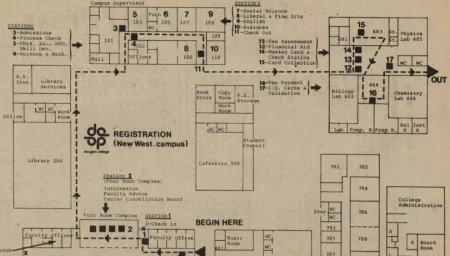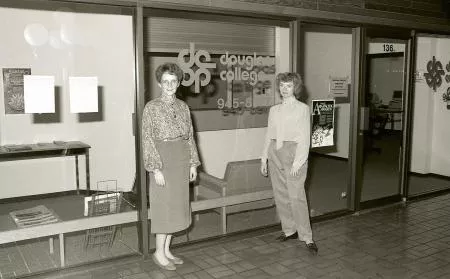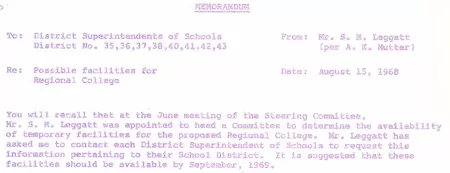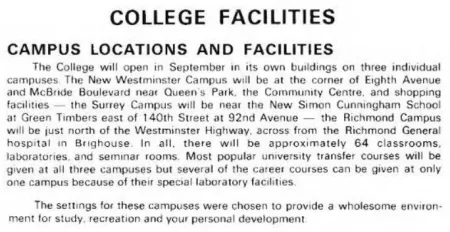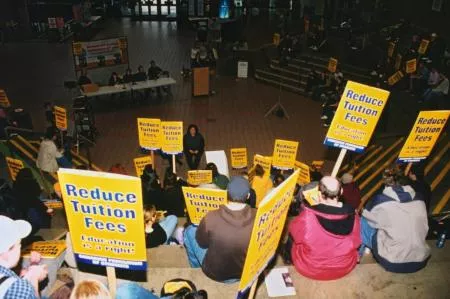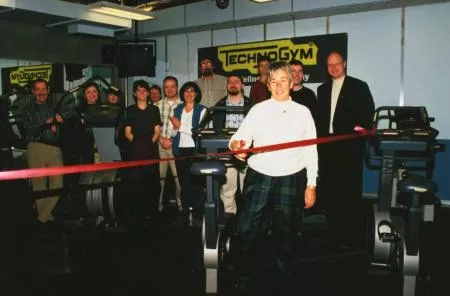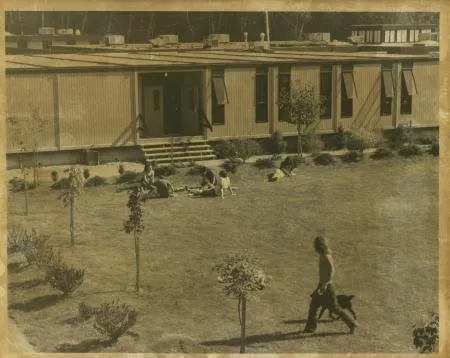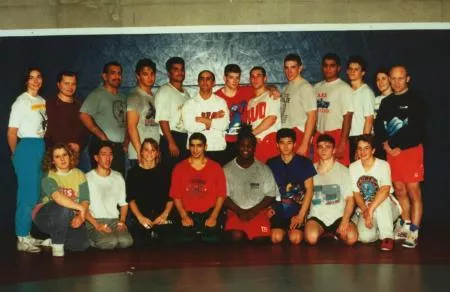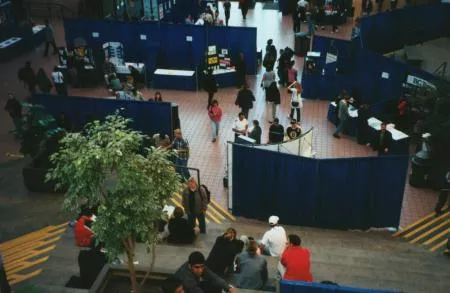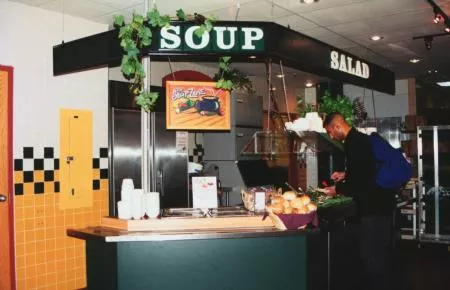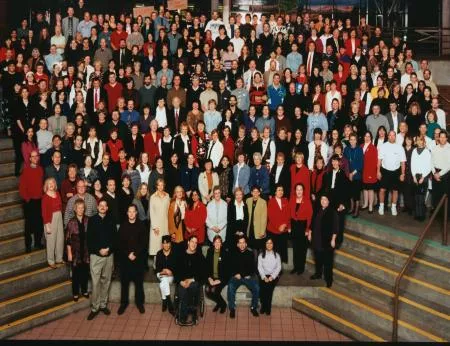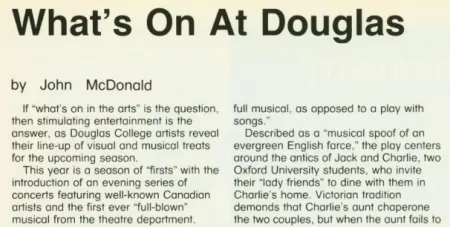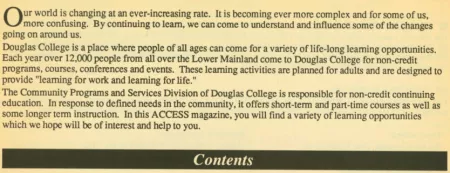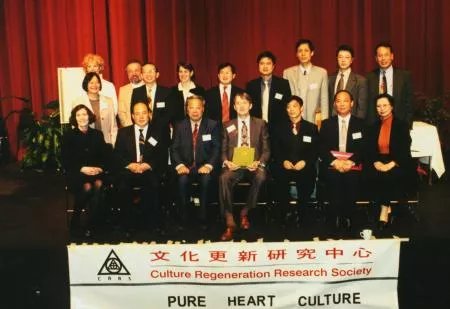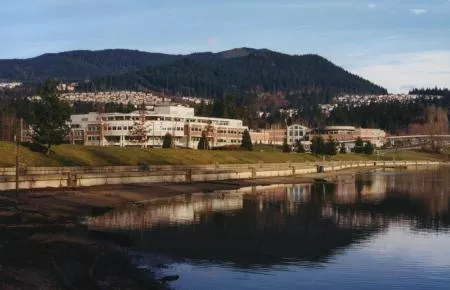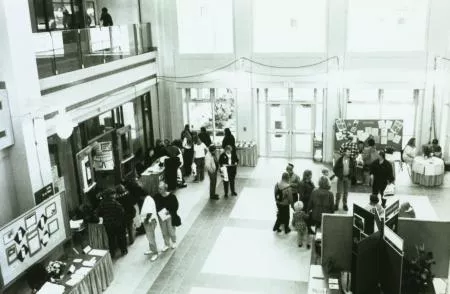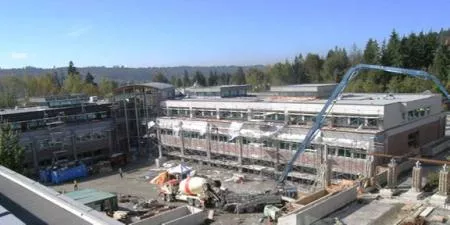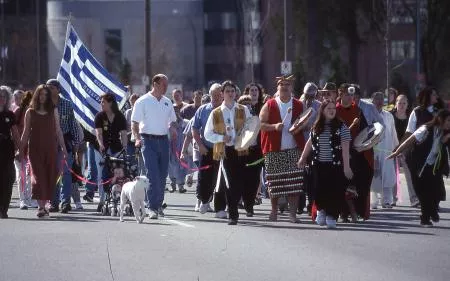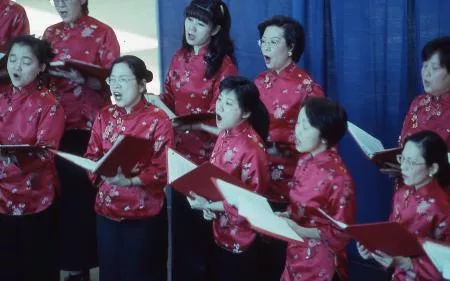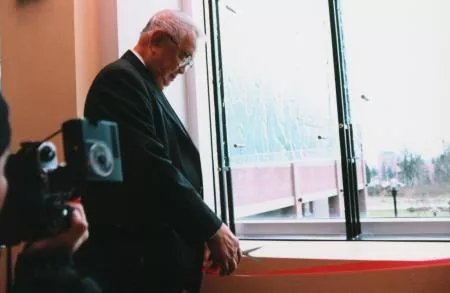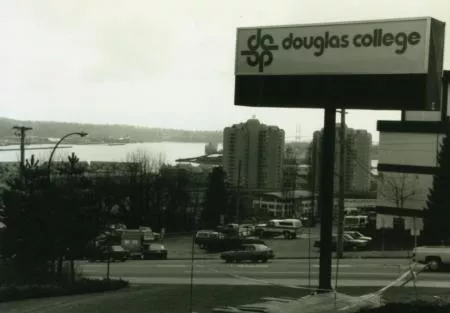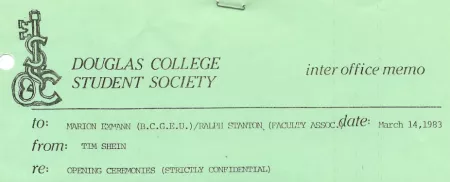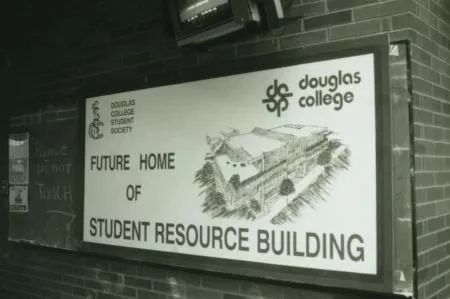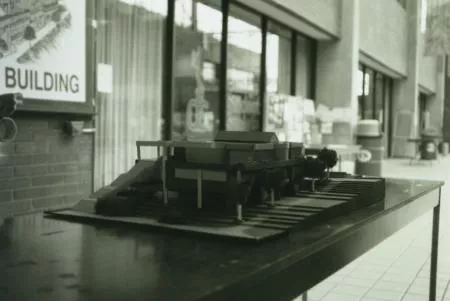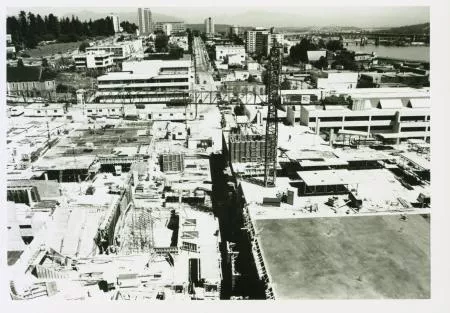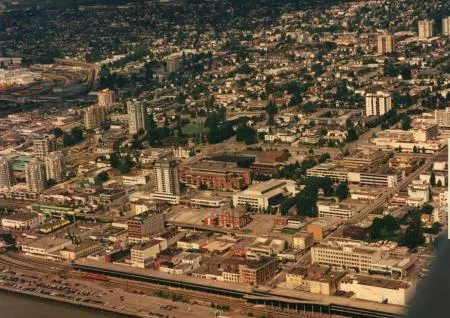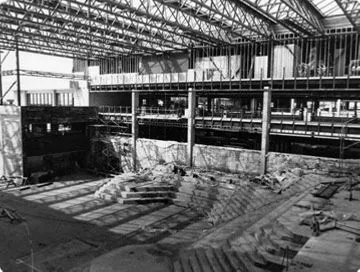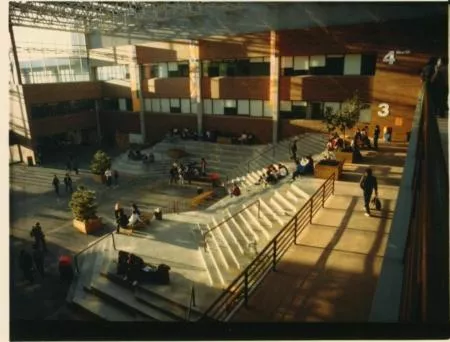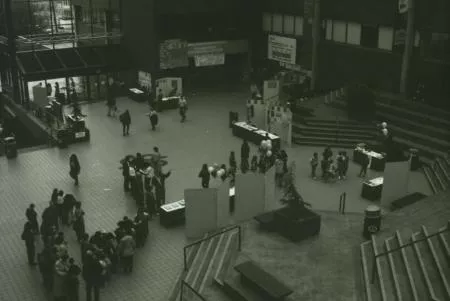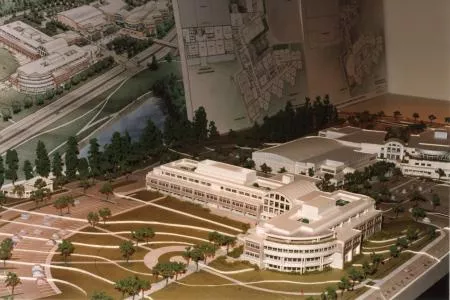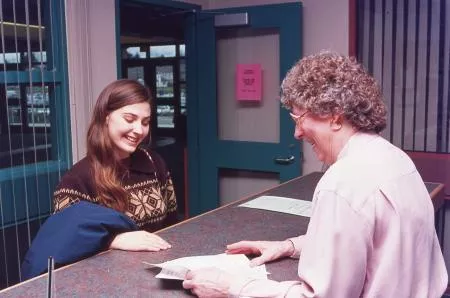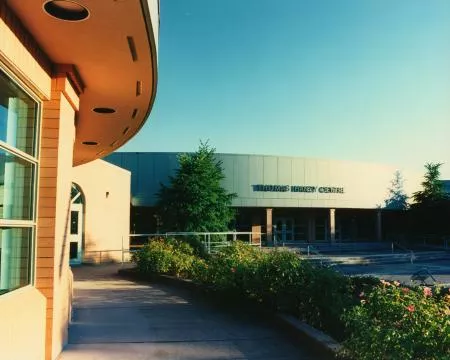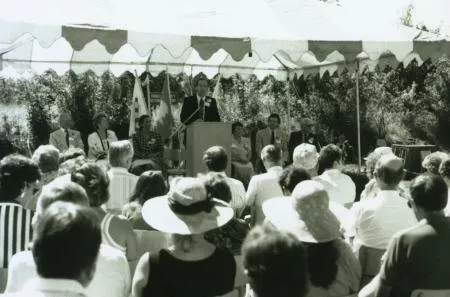Douglas College Campuses in our Archives
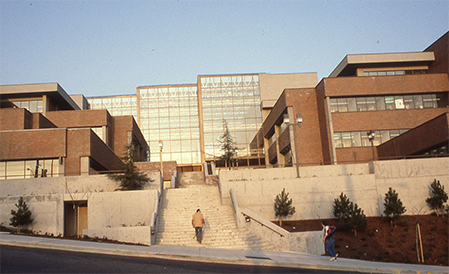
Inspired by the exciting news of the upcoming permanent campus development at 808 Royal Avenue and the recent campus expansion into the Anvil Office Tower (2018), this year the Douglas College Archives is presenting a short history of the Douglas College Campuses as part of our participation in Archives Awareness Week 2023. Through our archival photographs, video, and textual materials we’re putting a brief spotlight on the College’s many(!) campuses.
College campuses are so much more than lecture halls and administrative offices. They are places not only of education and learning, but also of community, connection, fun, art, performance, diversity, well-being, and activism. College campuses play a significant role in student life as well as their surrounding communities.
The featured documents showcase the planning, administration, and labour that went into the many campuses of Douglas College from the 1960s to the 2000s. They also give us a look at the celebrations, activism, community engagement, and student life on our campuses over the decades.
How Many Campuses Can One College Have?
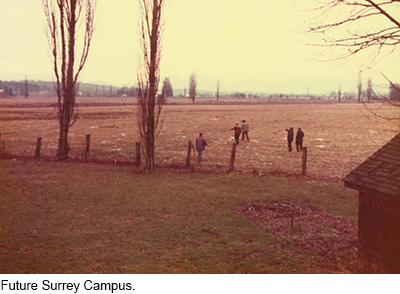
Established in 1970, the College initially had a satellite campus model with classes being taught out of a variety of buildings and short-term portables across Richmond, Surrey, and New Westminster. Douglas College would later expand locations into Coquitlam, Maple Ridge, Langley, and Burnaby. The early hope was that two permanent campuses would be built on both sides of the Fraser River within a few years of the college being up and running. However, it wouldn’t be until 1983 that Douglas finally got its first permanent location at 700 Royal Avenue, in New West.
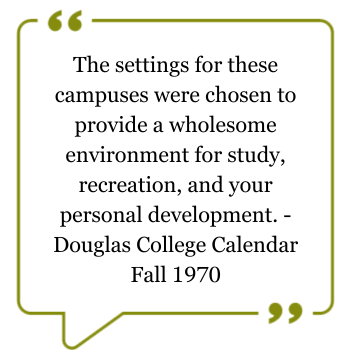
Some of the earliest records in our collection indicate that finding the right sites was a challenge. In his history of Douglas College, Gerry Della Mattia recalls the struggle of finding appropriate facilities to house the budding College, leading to the eventual decision to use prefabricated portables, retrofitted warehouses, and secondary schools as impermanent solutions. One memo from 1968 even states that barns should be considered as temporary accommodation!
Campus site planning involved intense research. Records preserved from the Regional College Steering Committee indicate they had to consider a proposed site’s geography, centrality and accessibility, land use and future development patterns, local population, local government, utilities, services (like garbage disposal), facilities such as nearby hospitals, local labour supply, zoning-by-laws, transportation, and so much more.
The three initial campuses had 64 classrooms, labs, and seminar rooms. Each campus had access to library services, a cafeteria, and parking. Students were expected to attend the campus nearest their residence, however not all classes – particularly the career programs – were available at every location.
Between 1970 and 1978, Douglas College existed across eight school districts and in 20 different locations! Textual records from department and council meetings in our collection capture the frustration some faculty felt in having to teach classes in two or three different municipalities in the same day. Talk about a rough commute!
By the 1990s, the Douglas campuses would both wax and wane. The 1970s continued to see growth with Douglas expanding facilities into Maple Ridge, Coquitlam, Langley, and Burnaby. However, in 1981 Kwantlen College (now Kwantlen Polytechnic University) split from Douglas College, effectively ceasing Douglas’ campuses in Richmond, Langley, Newton and Surrey. Despite the split, in 1983, Douglas finally opened its first permanent campus in New Westminster (our current NW location). The 1990s saw more growth with both the Thomas Haney Centre (1992) and the David Lam campus (1996) opening in Maple Ridge and Coquitlam.
A Place for Students, a Space for Community
Early Student Handbooks show that the philosophy of Douglas was twofold:
- To assist students to do what they love and be good at it by providing a wide range of learning experiences that suit their needs and;
- To be a major community centre for academic, occupational, athletic, cultural, and social activities.
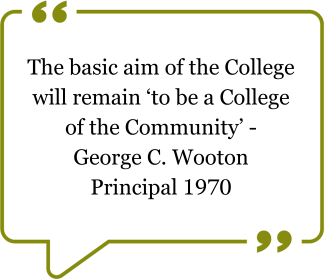
While the primary function of a college campus is to facilitate education and higher learning opportunities, they are also hubs for Student Life and centers for community engagement. College campuses offer a wide range of services, facilities, amenities, and events to students and the broader community. Photographs and handbooks held in the Archives capture the various services and amenities Douglas College has offered over the years that have contributed to the well-being of students. These have included weight rooms and gym facilities, optician services, library services, counselling, academic and career planning, social clubs, and more. Students could even get their teeth cleaned at the Winslow campus in Coquitlam!
Other materials in the Archives demonstrate the extensive range of community non-credit courses available on campus over the years, such as First Aid training, massage therapy, business writing, dance, music, and theatre. Douglas’ campuses were a popular place to be! A preserved copy of ACCESS Magazine from 1988 states: “Each year over 12,000 people from all over the Lower Mainland come to Douglas College for non-credit programs, courses, conferences, and events.”
Additionally, College campuses provide the necessary space for large groups to get together for celebration and fun such as graduation ceremonies and staff holiday parties. College campuses may also become a gathering place in times of mourning or remembrance. Photographs and textual records in the Archives capture Douglas’ campuses in times of both collective joy and collective grief – as seen in the photograph of the memorial held for the École Polytechnique massacre on the New West campus in 1989.
Douglas College has long been a centre for the community and students to enjoy theatre, art, and attend or host cultural activities. Preserved newsletters, promotional posters, pamphlets, photographs, and calendars showcase the many concerts, stage productions, and cultural activities hosted on our campuses. You can check out many of these materials at our DOOR website where archives and library staff have been diligently working to make these amazing resources accessible through digitization.
At Last, a Permanent Home
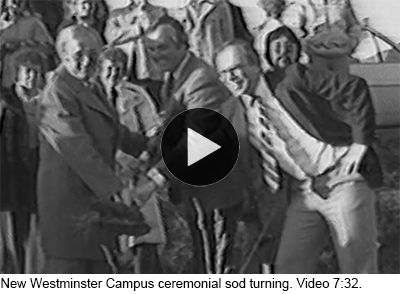
After more than a decade of planning, the construction of a permanent campus at 700 Royal Avenue in New Westminster was finally underway by 1980. Originally planned to be part of a network of multiple permanent campuses on the North and South sides of the Fraser River, the split from Kwantlen College in 1981 meant Douglas had to reconsider its long-term plans. However, this didn’t affect construction and the new campus was opened on March 18, 1983, to a (mostly) enthusiastic full house. A memo in the Archives shows that Douglas College Student Society (DCSS, later the DCSU) exercised their rights with a “silent protest” on opening day. Their aim was to bring attention to the frustration students felt towards the Education Minister, Bill Vander Zalm, regarding cuts to public education at the time. With its opening, the College consolidated all services into the new campus, except for one outlier location in Maple Ridge.
The 1990s brought about more growth with two more permanent campuses being built. The Thomas Haney Centre in Maple Ridge opened its doors in 1992 and in 1996 the David Lam campus opened in Coquitlam. While the Coquitlam campus remains, the Thomas Haney Centre experienced enough challenges that in 2003 Douglas College closed its last Maple Ridge location after 30 years.
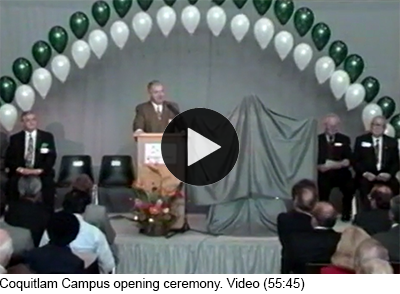
The David Lam campus, known as the “Pinetree Way” campus in many of the planning records, was a response to the rapid growth in Coquitlam and an increasing scarcity of seats at New West. Douglas purchased land from the City of Coquitlam in 1990 and began the site’s planning in earnest soon after. Planned with integration of community centers, recreation sites, and secondary schools in mind, a major objective for the Coquitlam campus was that it be designed for “life-long learners”. The Douglas College Foundation was instrumental to the development, as they undertook the then largest capital project fundraising campaign for the College. The campus was opened with a big ceremony on October 18th, 1996. David Lam, Lieutenant Governor of British Columbia from 1988-1995 and notable philanthropist, cut the ribbon. Photographs in our collection show that the opening ceremony was an event that featured diverse cultures coming together in celebration of education and community. In 2008, the Health Sciences Building was a welcome addition.
A Sense of Belonging

College campuses provide a unique space to bring people together, foster a sense of belonging, and build community. At Douglas College, we are committed to advancing equity, diversity, accessibility, and inclusivity on our campuses. Recognizing that past efforts, initiatives, or approaches to EDI will not always meet or align with contemporary social attitudes, expectations, and standards; it is still important to acknowledge the stepping stones and markers of progress on which we continue to build a more socially just, equitable, and inclusive world. Examining records held in the Archives of past events, administration, and collaboration can provide insight into Douglas’ history of equity, diversity, and inclusion initiatives on its campuses over the past 53 years.
Did you know that the College had Women's Centres on its campuses at New West, Coquitlam, and Maple Ridge for more than two decades? The Centres’ main purpose was to “assist women gain equal access to College programs and Services.”

The Centres provided resources and advocacy around issues of health, personal safety, finances, and employment preparation (to name a few). They also provided free workshops, support groups, and organized events and activities such as film screenings that related to feminism, women's lived experiences, and human rights. A year end report from 1992/93 shows us that the Women’s Centre’s activities that year included conducting research into access issues for immigrant women, producing a video on the experience of single mothers as college students, and expanding the number of free workshops to include more topic areas of interest to Indigenous women, women with disabilities, and mature women.
In 1975 the College participated in International Women’s Week (Nov. 20-29th) by hosting a series of events under the theme: “Making Social Change Effective”. Events included ‘non-traditional’ skills workshops, panels on shifting gender-role definitions, and discussions of women’s rights, human rights, and equal opportunity.
In the mid 2000s, Douglas College in partnership with QayQayt First Nation proposed the development of a purpose-built gathering place for Indigenous students and broader communities on the New West campus. Materials in the Archives show the proposed centre was to function as a multi-purpose facility that would be used for traditional ceremonies, cultural celebrations, and hosting graduations and student performances. The centre would support Indigenous students through Indigenous Student Services, have a lounge area, and would offer culturally appropriate wellness activities. The centre would also function as a community resource as a location to host meetings, workshops, and more.
Beautifully designed and featuring traditional art such as a Coast Salish welcome figure by artist Susan Point, the Indigenous Gathering Place (formerly the Aboriginal Gathering Place) officially opened on January 19th, 2012. It continues to serve as a space that provides support and resources to Indigenous students as well as a venue for ceremonies, potlucks, and meetings.
And So Much More
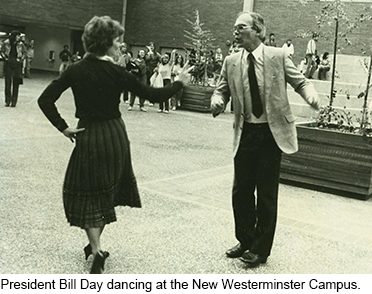
While this was just an introductory survey of the complex history of Douglas College’s campuses, the Archives has thousands of records, photographs, and other materials for anyone interested in taking a deeper dive. Did you know the New West campus concourse became a short-lived model space station for Expo 1986? Or that the Coquitlam campus was a movie set for a horror sci-fi made-for-TV movie in 1997? Check out what other stories are waiting to be told in the Douglas College Archives or get touch in with us at archives@douglascollege.ca.


